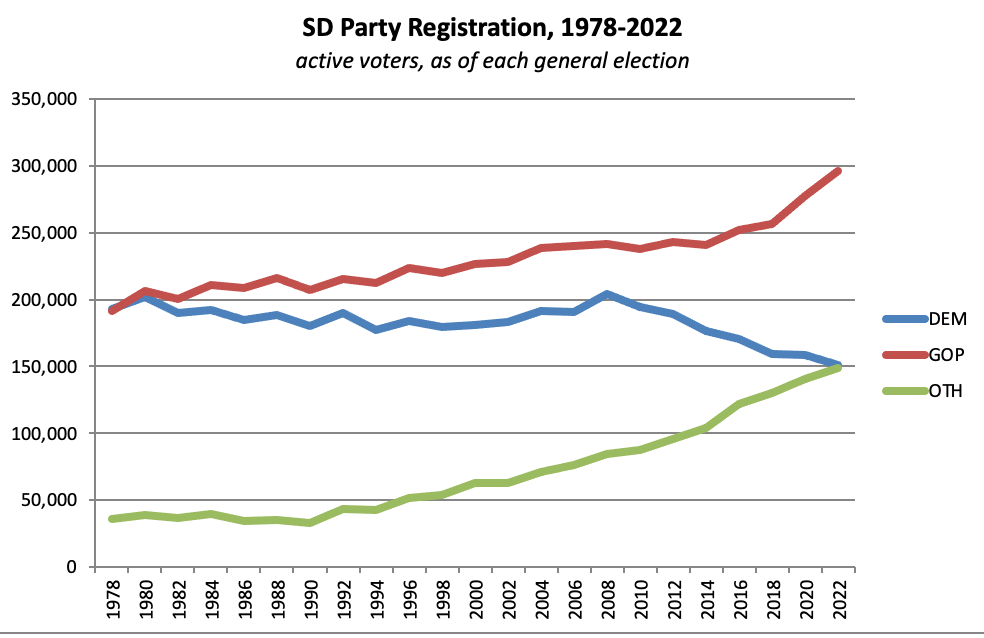During the lead-up to the 2022 general election, SD political reporters wrote about the Republican Party’s continued growth in the state. Bob Mercer and Jonathan Ellis, as well as this blog, noted the increases in SD GOP registration, as well as the decline in the South Dakota Democratic Party, whose historic slide had the party on place to slip behind Independents in voter registration.
This morning, left-leaning blogger Cory Heidelberger and conservative blogger Pat Powers both note that this threshold has been met, as SD Democrats have fallen behind Independents, even as Republicans continue to grow. It’s a historic fall for the Democrats, who last held the registration advantage in 1978 but who controlled the state’s entire congressional delegation as recently as 2004. As this blog has noted, SD Republicans are now on a winning streak in statewide elections that began in 2010, while the party’s control of the State Legislature is the largest since 1953.
Exactly when the change occurred depends on how one counts “Independents.” The South Dakota Secretary of State reports party registration at the beginning of each month and on the day of statewide elections. The Secretary of State, though, reports separate categories for “Independent,” “NPA (No Party Affliation),” and “Other.” The small Libertarian Party is also counted separately.
The combined totals of Independent, NPA, and Other reached 151,521 on August 1, 2023, exceeding for the first time the Democratic Party total, which was 150,918 on that date. If one includes the Libertarian Party among the total Independent/Other classification, this threshold was reached on March 1, 2023. This blog has posted the history of party registration since 1978, thanks in large part to Jim Soyer’s work over the years in recording the totals on every general Election Day. Soyer’s totals, which this blogger has kept up, combine Independent, NPA, Other, and all minor parties into a single total. Here is one of the charts used in that post:

Although the decline of the Democratic Party to third place in South Dakota is a milestone in modern South Dakota history, one cannot say with certainty that it is the first time in state history that the party has been in the third position. Although voter registration records are not readily available, election results indicate that the Populist Party (and related parties) may have exceeded the Democratic Party in the state’s early history. In three gubernatorial elections in 1890, 1892, and 1894, the populist-affiliated “Independent Party” finished in second place, ahead of the Democratic nominee. The populists and Democrats thereafter joined forces with a “fusion” ticket that elected Governor Andrew E. Lee in 1896 and 1898 but lost to the Republicans in 1900.
